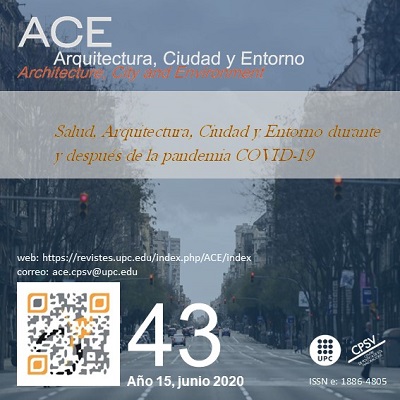Analysis of the Spatial Structure of Beijing from the point view of Weibo Data
DOI:
https://doi.org/10.5821/ace.15.43.9302Keywords:
urban structure, subcenter, social media data, LBSNAbstract
Beijing as the second largest city in China has a controversial urban structure. Traditional methods usually identify the urban structure of cities by analyzing the employment distribution. This research studies the temporal-spatial structure of Beijing metropolitan area in terms of social media activities. It proposes to utilize Weibo (the Chinese equivalent of Twitter) density to describe the citizens' activities in Beijing in one week and adopt the classic exponential model to identify Weibo sub-centers. It detects sub-centers in different time periods and compares them with the actual urban land uses. Moreover, the studied area extends to the “peripheral districts” of Beijing, thus it assesses the developmental situation of the whole Beijing area. The results indicate that the structure of Beijing indeed shows a polycentric structure according to the distribution of potential Weibo sub-centers, though the only clear spatial structure of Weibo distribution is confirmed by the model is the period of the weekend. These Weibo sub-centers of weekend are the airport, commercial areas, tourist attractions, universities, and mixed-activity areas, which have intense flows of human activities. Weibo data is proved to be a useful data source to study the urban structure and urban functional areas.
Published
Issue
Section
License
| INTELECTUAL PROTECTION CRITERIA |
At this moment, it is count with the "Oficina Española de Patentes y Marcas", while global protection it is being processed by the World Intelectual Property Organization (OMPI/WIPO). Nevertheless the International Standard Serial Number Office (ISSN) has given the following numbers ISSN: 1886-4805 (electronic version) and 1887-7052 (paper version). All articles will be peer reviewed, using double blind reviewing. |
| COPYRIGHT |
The article contents and their comments are authors exclusive liability, and do not reflect necessarily the journal editor commitee's opinion. All ACE published works are subject to the following licence CC BY-NC-ND 3.0 ES http://creativecommons.org/licenses/by-nc-nd/3.0/es/ It implies that authors do not hold nor retain the copyright without restrictions but only those included in the licence. |


































